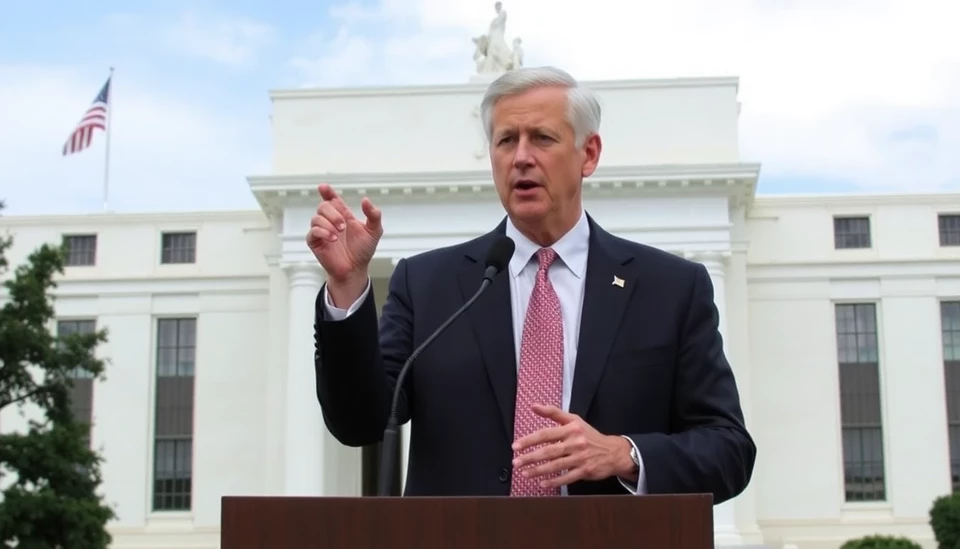
Recently, Thomas Barkin, the president of the Richmond Federal Reserve, expressed that the central bank is well-positioned to respond to economic fluctuations as they occur. In a series of remarks intended to clarify the Fed's approach to monetary policy, Barkin emphasized the importance of adaptability in the face of evolving economic indicators.
Barkin outlined that the current economic landscape remains uncertain, with various factors influencing the national economy. These factors include labor market conditions, inflation rates, and consumer spending habits, all of which are key metrics that the Federal Reserve closely monitors.
The Fed, as outlined by Barkin, has a dual mandate: to promote maximum employment and to maintain price stability. He reassured stakeholders that should economic conditions shift—whether that be a rise in inflation or an unexpected downturn—the Federal Reserve has the necessary tools to adjust their policies accordingly. This commitment to flexibility signals a proactive approach, allowing the Fed to respond dynamically to changes in the economy.
One of the significant points Barkin discussed was the robustness of the labor market. He noted that while there are signs of a slowing growth rate, employment levels remain strong. As industries adjust to post-pandemic realities, the Fed expects to see varying degrees of hiring and wage growth across sectors, but overall, the outlook remains positive.
On the topic of inflation, Barkin mentioned that progress has been made in curbing inflation from crisis levels seen in previous years. Inflation has moderated, yet the Fed remains vigilant and ready to react if inflation shows signs of resurgence. Barkin highlighted the potential for quick adjustments to interest rates should inflationary pressures escalate in the future.
Furthermore, Barkin's comments come amid ongoing debates regarding the effectiveness of current monetary policy strategies. With inflation still above the Fed's established targets, discussions continue on whether the right balance is being struck between fostering growth and controlling prices. Barkin, however, reaffirmed the Fed's readiness to pivot as necessary, maintaining that their current stance is based on careful analysis of economic signals.
The Federal Reserve's strategy of assessing the economy on a month-to-month basis allows for nimble adjustments which are essential in today’s rapidly changing economic environment. Barkin's remarks cultivated a sense of reassurance among investors and market analysts alike, suggesting the Fed will remain a stabilizing force through potential economic turbulence.
As the nation approaches the holiday season, consumer spending will be another critical aspect for the Fed to monitor. With households adjusting their budgets and spending patterns as they navigate economic uncertainties, the implications of these changes could be significant for inflation and overall economic health.
In conclusion, Barkin's comments reflect a steadfast commitment from the Federal Reserve to effectively navigate through the complexities of the economy. The emphasis on preparedness and flexibility hints at a strategic mindset that prioritizes stability, reassuring markets that the Fed is equipped to handle future challenges.
As we look ahead, all eyes will be on the upcoming inflation reports, labor statistics, and consumer confidence indexes, which will provide further insights into the Fed’s potential policy adjustments in the coming months.
#FederalReserve #ThomasBarkin #EconomicPolicy #Inflation #MonetaryPolicy #LaborMarket #ConsumerSpending #InterestRates #Economy #MarketStability
Author: Daniel Foster




